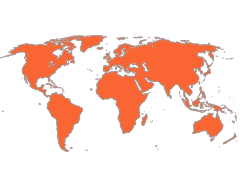
How do we know
Smallpox was deemed eradicated by a group of independent international experts who certified the country was free from smallpox for at least two years and that the surveillance systems were capable of detecting outbreaks.Downloads
- Read the entire case study
(PDF | 115 K)
External Links
- Read an interview with a 1971 Peace Corps volunteer who worked on the Smallpox Eradication Program
- Learn more about the history of smallpox and its relevance as a bioterrorism threat today
- Read about smallpox and the eradication campaign
- Read the 1980 World Health Organization magazine issue announcing the eradication of smallpox
- Watch a description of smallpox eradication and the importance of early detection and early response
Health Condition: In 1966, there were approximately 10 to 15 million cases of smallpox in more than 50 countries, and 1.5 to 2 million people died of the disease each year. Smallpox has been eradicated from the globe, with no new cases reported since 1978. The threat of bioterrorism keeps the danger of smallpox alive, however, and debate continues over whether strains of the disease should be retained in specified laboratories.
Intervention or Program: In 1965, international efforts to eradicate smallpox were revitalized with the establishment of the Smallpox Eradication Unit at the World Health Organization and a pledge for more technical and financial support from the campaign's largest donor, the United States. Endemic countries were supplied with vaccines and kits for collecting and sending specimens, and vaccination was made easier by the provision of the bifurcated needle. An intensified effort was led in the five remaining countries in 1973, with a concentrated effort of surveillance and containment of outbreaks.
Impact: By 1977, the last endemic case of smallpox was recorded in Somalia. In May 1980, after two years of surveillance and searching, the World Health Assembly declared that smallpox was the first disease in history to have been eradicated.
Cost and Cost-Effectiveness: The annual cost of the smallpox campaign between 1967-1979 was US$23 million. In total, international donors provided US$98 million, while US$200 million came from the endemic countries. The US saves the total of all its contributions every 26 days because it does not have to vaccinate or treat the disease.

